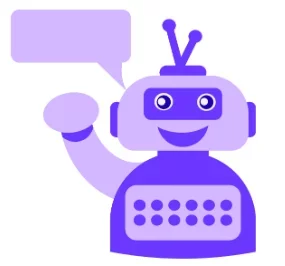As the use of artificial intelligence and chatbots continues to grow, so do concerns about potential cybersecurity risks and threats. ChatGPT, an AI-powered chatbot developed by OpenAI, is no exception. While ChatGPT offers many benefits, such as personalized and human-like conversations, it also poses potential risks to user privacy and security.
Whether you’re a ChatGPT user or just curious about AI chatbots, this article will provide valuable insights into the world of chatbot cybersecurity.
What is cybersecurity?
Cybersecurity refers to the practice of protecting computer systems, networks, and sensitive data from unauthorized access, theft, damage, or other malicious attacks. It involves the use of various technologies, processes, and practices to safeguard digital assets from cyber threats such as malware, phishing attacks, hacking, and other forms of cybercrime. The main goal of cybersecurity is to ensure the confidentiality, integrity, and availability of data and systems. It also prevents unauthorized access or exploitation of sensitive information. Cybersecurity is becoming increasingly important as more businesses, organizations, and individuals rely on digital technologies and networks to store and transmit sensitive data.
The different types of cybersecurity
- Network Security: it focuses on securing computer networks from unauthorized access, theft, or damage. This involves implementing firewalls, intrusion detection systems, and other security protocols to prevent cyber attacks from penetrating a network.
- Information Security: it involves protecting sensitive information from unauthorized access, theft, or damage. This includes implementing data encryption, access controls, and user authentication protocols to safeguard data.
- Application security: it refers to the practice of securing software applications from cyber threats, including unauthorized access and data theft or damage. This involves implementing security measures such as secure coding practices, vulnerability testing, and regular software updates.
- Cloud Security: it involves securing cloud-based systems and applications. This includes securing data stored in the cloud, implementing access controls, and securing the network connections between cloud-based services.
- IoT Security: it refers to the practice of securing Internet of Things (IoT) devices and infrastructure from cyber threats. This involves implementing security measures such as encryption, secure communication protocols, and regular updates to protect data and prevent unauthorized access.
- Endpoint Security: it focuses on securing devices connected to a network, such as laptops, desktops, and mobile devices. This includes implementing security software, such as antivirus software and firewalls, and configuring devices to enforce security policies.
- Mobile cybersecurity: it involves securing mobile devices, such as smartphones and tablets, from cyber threats. This includes implementing security measures such as passcodes, biometric authentication, encryption, antivirus and anti-malware software, and remote wipe capabilities.
ChatGPT Security risks and threats

ChatGPT, like any other technology, comes with its own set of potential risks and security concerns. Here are some of the risks associated with ChatGPT:
- Misinformation and disinformation: ChatGPT can be used to generate content. So it can be manipulated to spread false information or propaganda. This can be particularly problematic in the context of social media and news sites, where false information can spread rapidly and have real-world consequences.
- Privacy concerns: ChatGPT may be able to generate text based on user data, raising concerns about user privacy. If sensitive information is used to train the ChatGPT model, there is a risk that this information could be accessed or stolen by unauthorized third parties.
- Security vulnerabilities: As with any software or technology, there is always a risk of security vulnerabilities that could be exploited by malicious actors. This could include the introduction of malicious code or the ability to manipulate the model to generate misleading or harmful content.
- Phishing and social engineering attacks: It is one of the biggest cybersecurity risks associated with ChatGPT. Cybercriminals can use ChatGPT to create fake profiles and send phishing emails to unsuspecting victims. The attacker can simulate a real human-like conversation with the user to deceive them into sharing confidential information. They can also trick users into downloading malware.
- Social engineering attacks: ChatGPT could also be used to facilitate social engineering attacks, where attackers use psychological manipulation to trick users into divulging confidential information or performing actions that they otherwise wouldn’t.
Let’s have a look at this interesting video:
How to mitigate these risks and threats?
Here are some strategies we can propose to you to reduce these risks and threats associated with ChatGPT:
- Limit access to sensitive information: To protect user privacy, it’s essential to limit access to sensitive information and use anonymized or synthetic data when training ChatGPT models. Organizations must ensure that their data privacy policies comply with applicable laws and regulations, such as GDPR and CCPA.
- Implement multi-factor authentication: Multi-factor authentication can help protect against phishing attacks by requiring additional verification beyond just a password.
- Use security software and protocols: Implement security software and protocols such as encryption, access controls, and secure communication channels to protect against unauthorized access and data breaches.
- Train users on best practices: Educate users on best practices for staying safe online, including how to identify and avoid phishing emails, suspicious messages, and other social engineering attacks.
- Monitor for potential security vulnerabilities: Implement regular security assessments, penetration testing, and other monitoring measures to detect and address potential security vulnerabilities.
- Implement a zero-trust security model: Adopt a zero-trust security model that emphasizes continuous verification and authentication of access requests and user identity to reduce the risk of unauthorized access.
- Regularly update software and systems: Implement regular software and system updates and patches to address known security vulnerabilities and improve the overall security posture.
Our solution
After exploring multiple strategies to mitigate the risks and attacks you are exposed to by using ChatGPT, we are now focusing on a solution that might be interesting for your business. This solution is made exclusively for you. As you may know, we are an IT development agency based in Brussels. Our team is composed of 14 brillant developers.
Today, to continue or start using AI, we can propose you create your own “ChatGPT”. We are able to provide you with a personalized Chatbot. But you are probably wondering why you will pay us to create our own platform while there are free chatbots? One reason: compared to ChatGPT, we can assure you the security and the protection of your data. As a result, you can continue to provide content by using safe AI tools only made for you.
You want to book a meeting to talk about this?
The Future of AI chatbots and cybersecurity

The future of AI-powered chatbots is promising, with the potential to revolutionize how we engage with customers and automate various processes. However, with this growth, there are concerns about the associated security risks. Cybersecurity professionals need to stay on top of the threat landscape to understand how cybercriminals are using the technology and develop strategies to mitigate these risks.
ChatGPT, like other AI platforms, is not immune to cybersecurity risks and threats. However, with proper security measures in place, ChatGPT can help organizations improve their services and engage with customers more effectively.
As users of ChatGPT, we must also be aware of the potential risks and take steps to protect ourselves. This includes asking the right questions, such as how ChatGPT is securing our data, understanding the context of the conversation, and not sharing confidential information. In doing so, we can help to mitigate the risks associated with using ChatGPT and other AI-powered chatbots.
Conclusion
In conclusion, the use of ChatGPT and other AI-powered chatbots brings with it both benefits and potential risks. As we have seen, there are several security risks associated with using ChatGPT, like privacy concerns or phishing and social engineering attacks. However, there are also several strategies that organizations can adopt to mitigate these risks, including limiting access to sensitive information or using security software and protocols.
Moreover, to ensure the security and protection of your data, we propose a solution that might interest you. By creating your personalized Chatbot, our team of experienced developers can provide you a secure and safe AI tool. thanks to that, you can continue to create content while protecting your data.
By staying informed and implementing effective security measures, we can continue to enjoy the benefits of ChatGPT and other AI-powered tools without compromising our privacy and security.
You want more information on AI? Do not hesitate to read our article : Create a unique AI for your SMB.
